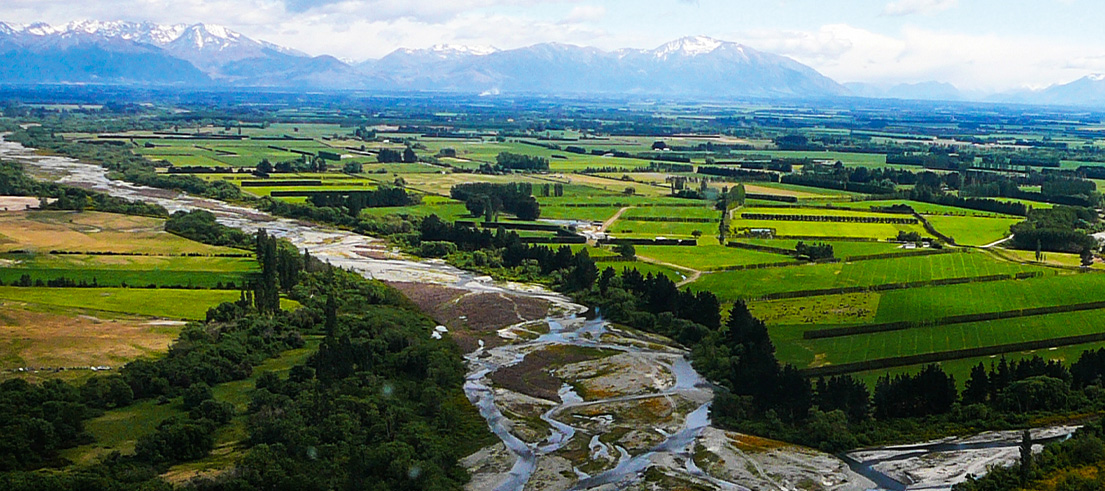
More protection for Canterbury’s freshwater and taonga with tightened rules
Council has adopted the recommendations of the independent hearing commissioners on Plan Change 7 to the Land & Water Regional Plan (LWRP) and Plan Change 2 to the Waimakariri River Regional Plan.
The plan changes build on the operative Nutrient Management and Waitaki Plan provisions (established by Plan Change 5 to the LWRP), which set industry-agreed “Good Management Practice” as the minimum standard for all farming activities.
Improving freshwater outcomes
Councillor John Sunckell said the region-wide part of Plan Change 7 aims to improve freshwater outcomes for the whole of Canterbury.
“It provides greater protection to habitats of freshwater species, enables consideration of Ngāi Tahu values in more activities, enables the use of managed aquifer recharge (a technique to improve river flows) across the region, and provides a revised nutrient management framework for commercial vegetable growing,” he said.
Plan Change 7 also introduces new frameworks for freshwater and nutrient management in the Orari Temuka Opihi Pareora (OTOP) and Waimakariri zones, following extensive community engagement.
“These changes will help with the delivery of recommendations in each Zone Committee’s Zone Implementation Programme Addendum,” Cr Sunckell said. “The plan change introduces requirements for some farms in these areas to further reduce their nitrogen losses and to exclude stock from more waterbodies.
Strong focus on water quality
“This even stronger focus on water quality will be good news for the environment in these catchments,” he said.
“However, in adopting these plan changes we acknowledge the significant farm system and economic challenges that farmers and growers in the OTOP and Waimakariri zones will face in giving effect to these rules - particularly in regard to nitrogen loss reductions and higher in-stream flows.”
Resource consent, including audited farm environment plans, is already required of farmers if they irrigate more than 50 hectares or have more than 20 hectares for winter grazing of cattle. There are now new thresholds for OTOP and Waimakariri.
“The nutrient management rules, which have been in place for several years now, are intended to address the effects of changing land use and promote improved water quality outcomes throughout the region. Plan Change 7 enhances this approach,” Cr Sunckell said.
Water quantity issues in OTOP and Waimakariri
Plan Change 7 also has a focus on water quantity issues in OTOP and Waimakariri. It increases minimum flows for rivers and streams where community outcomes are not being met and introduces new limits on the volume of water available for allocation.
Integrating Plan Change 2
Plan Change 2 to the Waimakariri River Regional Plan (WRRP) is the first step towards bringing this area into the Land & Water Regional Plan framework. “The main stem of the Waimakariri River, its upper catchment and tributaries south of the mainstem will continue to be managed by the WRRP,” Cr Sunckell said.
“We are now nearly at the end of the planning process that started in 2012. In partnership with the community, we have almost completed catchment-focused rules for the whole region. These plan changes will take us closer to where we need to be if we are to meet the Government’s objectives in the Essential Freshwater package.”
Until the plan changes become operative, activities must comply with the region-wide rules in the Land & Water Regional Plan, as well as the proposed rules that apply in the OTOP and Waimakariri sub-regions.
Activities may also need to comply with regulations in the National Environmental Standards for Freshwater 2020 and the Stock Exclusion Regulations, both part of the Government’s Essential Freshwater package.
Appeals
The plan changes are subject to an appeal period of 15 working days. Appeals (on points of law only) can be filed in the High Court. Once any appeals have been resolved, the plan changes in their final form will be made operative.
Find out more about the planning progress:
- Plan Change 7 to the Land & Water Regional Plan.
- Plan Change 2 to the Waimakariri River Regional Plan.
About the Land & Water Regional Plan
The Land & Water Regional Plan became largely operative in September 2015. It sets the framework to implement community aspirations for water developed through the Canterbury Water Management Strategy, a community-led, collaborative approach to improve water outcomes throughout the region.
The LWRP sets region-wide objectives, which are implemented at two levels –- region-wide provisions and 10 sub-region sections. The policies and rules in the sub-region sections can apply instead of, or in addition to, policies and rules in the region-wide sections.
Previous plan changes that are now operative have amended the sub-region sections applying to Selwyn Te Waihora, Wairewa/Lake Forsyth, Hinds Plains, Waitaki and South Coastal Canterbury. There is also a separate plan for the Hurunui-Waiau zone – the Hurunui Waiau River Regional Plan.
Further information about the plan:
- Read our article: Plan Change 7 and Plan Change 2 - What you need to know.
- Find out more about the current Land & Water Regional Plan.
Essential Freshwater package
The Government’s Essential Freshwater package requires regional councils to notify new freshwater plans by 2024. Environment Canterbury intends to notify an integrated plan, also including new coastal provisions, by that date.
